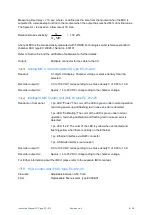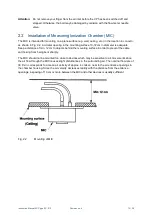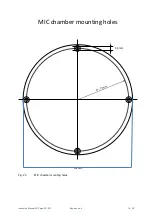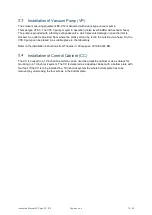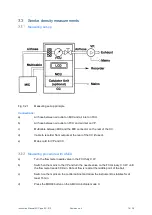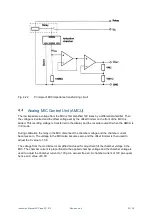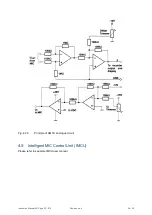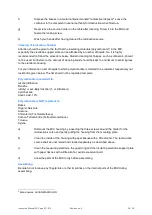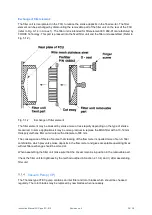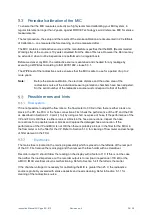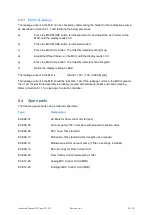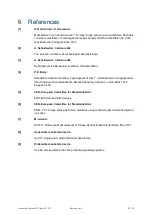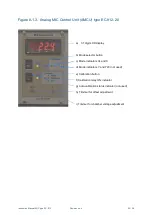
Instruction Manual MIC type EC-912
Revision no.4
20 / 38
Theory of operation
General working principle for ionization chambers for smoke
density measurements
The use of ionization chambers as smoke sensors is well known and the associated theory outlined in
the literature.
The working principle for the ionization chamber for smoke density measurements is shown in Fig. 4.1
.
Fig. 4.1
Working principle for ionization chamber
The chamber consists of a pair of electrodes between which a volume of atmospheric air is present.
The electrodes are connected to a voltage source U
CH
so an electrical field E is applied to the air.
Radioactive radiation from a small radioactive source bombards the air and ion pairs are created
between the electrodes. The positive and negative air molecules forming the ion pairs are deflected
towards the negative and positive electrode, respectively. Some of the ions recombine before they
reach the electrode surfaces and become neutral air molecules. Other ions exchange electrons with
the electrode surfaces. This electron exchange results in a small electrical current I
CH
in the external
circuit.
When the air between the electrodes is clean, the ions formed move to the electrode with a certain
mean velocity and each ion which does not recombine in the volume contributes to the current.
However, if smoke particles penetrate the volume between the electrodes, the ions and the smoke
particles will be attached to each other with a certain probability. Since the smoke particles are much
heavier than the ions, the mobility of ions attached to smoke particles is greatly reduced and the
probability for recombination increased. So, their contribution to the external current becomes
negligible. Thus the external current is a function of the smoke particle density in the measuring
volume.



